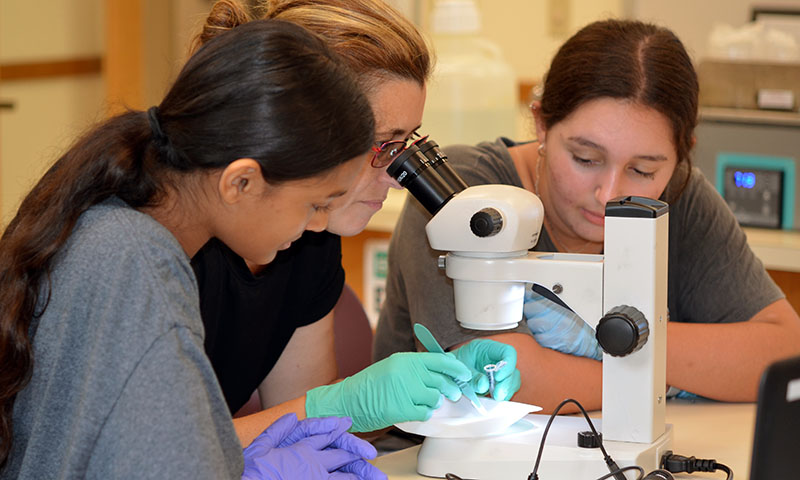DNA Barcoding
Use DNA barcoding to explore biodiversity

DNA Barcoding is offered in-person at DNALC locations and virtually on-demand.
In-Person DNA Barcoding
Experience the process of science in this project-based camp. A short "DNA barcode" (about 700 nucleotides in length) is a unique pattern of DNA sequence that can potentially identify any living thing. DNA barcoding projects allow students to link molecular genetics to ecology and evolution—with the potential to contribute new scientific knowledge about biodiversity, conservation biology, and human effects on the environment. Students will:
- extract and amplify DNA from tissue samples;
- use web-based bioinformatic tools to analyze DNA sequences and identify species of origin;
- create phylogenetic trees to display genetic and evolutionary relationships;
- use building blocks to model how polymerase chain reaction (PCR) is used to amplify DNA barcodes; and
- complete an open-ended project to investigate food fraud or study biodiversity.
On-Demand DNA Barcoding
Experience how DNA can be used for conservation efforts and consumer interest issues through this interactive virtual science camp! A "DNA barcode" (about 700 nucleotides in length) is a unique pattern of DNA sequence that can potentially identify any living thing. DNA barcoding allows students to link molecular genetics to ecology and evolution—with the potential to contribute new scientific knowledge about biodiversity, conservation biology, and human effects on the environment. Students will:
- extract DNA from plant and invertebrate tissue samples using multiple wet lab techniques;
- use LEGO® building blocks to model how polymerase chain reaction (PCR) is used to amplify DNA barcodes;
- use web-based bioinformatics tools to analyze DNA sequences and identify species; and
- create phylogenetic trees to display genetic and evolutionary relationships.


